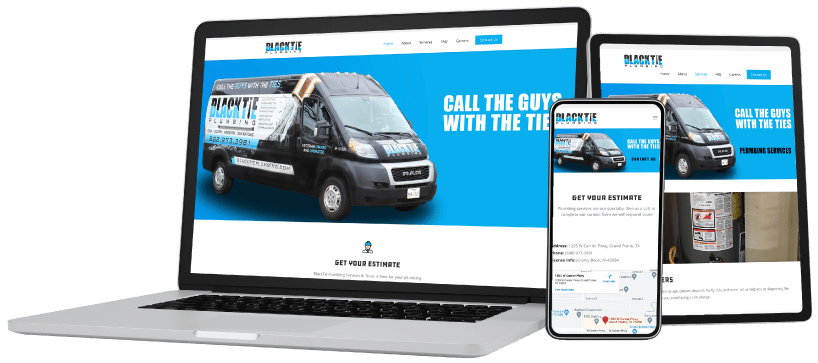Let’s be real—roofing is competitive. If your website doesn’t help you stand out, you’re losing jobs to companies who figured it out. Roofing websites aren’t just digital business cards anymore—they’re full-blown conversion machines (or at least, they should be). A clunky layout or slow mobile load time can mean missed leads, fewer calls, and weaker customer trust.
But don’t worry. We’ve got you. These five roofing website essentials will help you capture more leads, build trust fast, and turn site visits into booked jobs.
Roofing Website Essentials
If you want more calls, more quote requests, and more jobs, your website has to do more than look good—it needs to work hard behind the scenes. Roofing websites that win are designed with features that boost visibility, build trust, and convert leads.
According to SOCi’s 2024 Consumer Behavior Index, 32% of U.S. consumers search for information about local businesses online at least once or multiple times a day. So, if your roofing website isn’t optimized, you’re basically invisible to a third of your market.
Here are the five essential conversion elements roofing websites need:
Lead Capture Forms: Convert Visitors into Leads
A visitor on your site is great. But a visitor who fills out a form? That’s gold.
Lead capture forms are your gateway to turning traffic into actual jobs. When done right, they can boost your conversions by 50% or more. The secret? Placement and simplicity.
Best practices:
- Place them above the fold, on service pages, in blog posts, or as well-timed pop-ups.
- Keep fields minimal—name, phone, zip code. That’s it.
- Include trust signals like “We respect your privacy” or “Free, no-obligation quote” nearby.
Also, make sure your form stands out visually and uses a strong call-to-action like “Get My Free Estimate.”
Want to see how this works in the real world? Check out our successful case studies of past clients.
Mobile Optimization: Ensure Seamless User Experience
Here’s the deal: over 60% of searches happen on mobile. If your site looks awful on a phone or takes forever to load, people are gone in seconds.
Google even uses mobile-first indexing, meaning the mobile version of your site directly affects your rankings.
What to prioritize:
- Fast load times (under 3 seconds is ideal)
- Responsive design that adjusts perfectly across screen sizes
- Thumb-friendly navigation—no tiny buttons or weird menus
Not sure how your site performs? Run it through Google’s Mobile-Friendly Test or PageSpeed Insights.
When your roofing website works flawlessly on mobile, you’re not just pleasing Google—you’re winning more calls, more leads, and more booked jobs.
Service Pages: Clearly Define Your Offerings
Ever landed on a site and thought, “Wait… what do they actually do?”
Detailed service pages fix that. They’re crucial for SEO and making sure visitors know exactly how you can help them.
A good service page should include:
- A clear headline using keywords like “Roof Replacement in [Your City]”
- Bullet points or sections breaking down what the service includes
- Customer benefits (why it matters to them, not just what you do)
- High-quality images of your work
- Internal links to related services or blog posts
Websites with optimized service pages see up to 30% more organic traffic. That’s a lot of extra eyeballs on your services—and more potential customers.
SEO Structure: Rank Higher and Get Found Online
75% of people never scroll past the first page of Google. If you’re not showing up, you’re basically invisible.
Your roofing website’s SEO structure is what helps Google understand what you offer, where you offer it, and how credible you are.
Quick SEO checklist for roofing websites:
- Clean, keyword-optimized URLs (like /roof-repair-atlanta not /page?id=132)
- Compelling meta titles and descriptions
- Schema markup for better search snippets
- Quality backlinks from credible sites
- Local SEO must-haves: Google Business Profile, reviews, location pages
Roofing companies that want to dominate the map pack and top listings should check out our roofing SEO services. We’ve helped dozens of contractors climb to the top of search results.
Trust Signals: Build Credibility and Win Trust
People don’t hire strangers. They hire businesses they trust. So your website needs to scream “We’ve got you covered.”
Trust signals include:
- Google reviews and testimonials
- Badges (like BBB, GAF certifications, manufacturer partnerships)
- Case studies with real before-and-after stories
- Warranties and guarantees
- Photos of your team and job sites
88% of consumers trust online reviews as much as personal recommendations. Make sure they’re front and center—not buried in a corner. Place trust signals on your homepage, near lead forms, and on every service page.
Need More Roofing Leads? Our Experts Can Deliver
If your website isn’t generating calls, leads, or sales—it’s not working hard enough. At LMH Agency, we’ve helped roofing companies across the country get found online, build trust with their audience, and convert more traffic into booked jobs. Check out our digital marketing solutions for roofers to see how we can help you get more leads, faster.
With years of experience and a proven track record, we specialize in:
- Cutting-edge website design tailored specifically for roofing companies
- SEO strategies that help you show up where it counts—on page one
- A track record of increasing brand visibility, calls, and booked jobs
We’ll work closely with you to understand your business, create a strategy that fits your goals, and build a custom-designed site that makes your company look as good online as it does on a roof. Schedule a call with us to get expert guidance and digital marketing solutions.




















